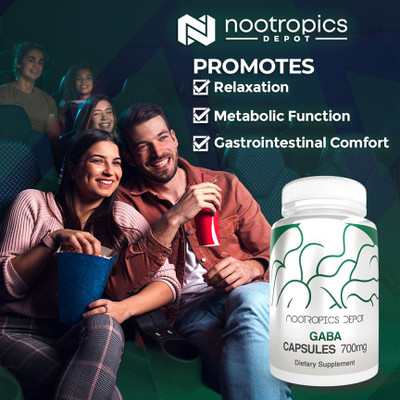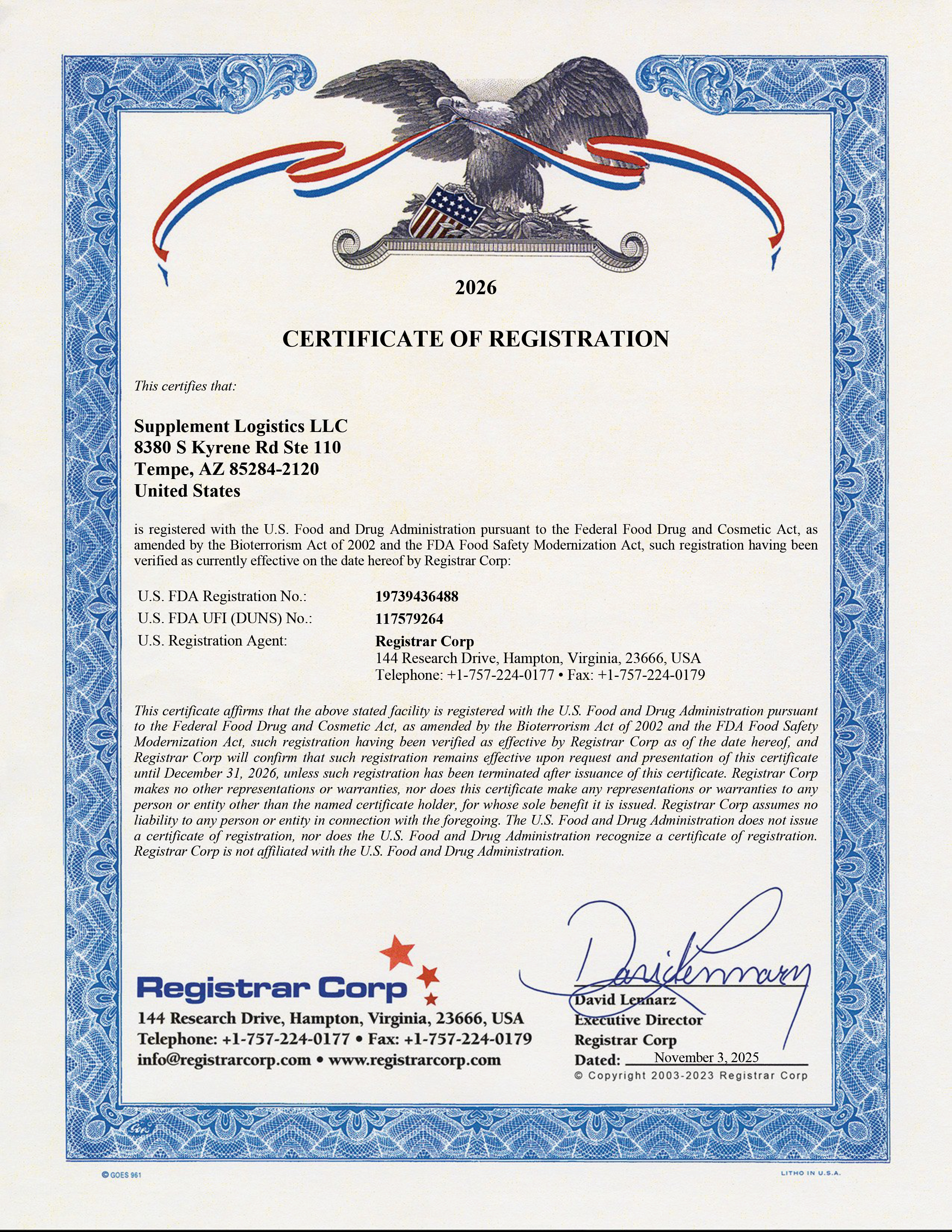







GABA Capsules | Gamma-Aminobutyric Acid
Your order will be shipped tomorrow
Product Usage
700mg (One Capsule)
Flexible
With Or Without Food
1-2 Times Daily
Why Should I Take GABA?
GABA as a supplement is probably one of the most hotly debated topics on forums all over the internet. One side claims it is the best thing since sliced bread, bringing powerful relaxing effects to the table, while the other side claims it is all placebo because it doesn’t cross the blood brain barrier (BBB). This debate has been going on for over a decade now, and we always shied away from GABA due to this. However, one day, a giant bag of GABA showed up and we decided to actually give it a fair trial. Well, what would you know, we loved the effects! Then came the hard task, why does it work?
There are a few reasons why GABA actually works. First of all, it does appear to cross the BBB in small amounts. So, if we take high doses, there is certainly some GABA making it into the brain. Secondly, GABA is converted peripherally into metabolites which can cross the BBB such as succinic semialdehyde, gamma-hydroxybutyric acid and glutamine. These compounds can then form GABA again once they reach the brain. Thirdly, many probiotics can produce GABA and supplementing with these GABA producing probiotics, has been shown to produce relaxing effects. This should in theory be impossible if the GABA they are producing is not crossing the BBB. Well, it turns out this may not even be necessary. The nervous system present in our gut, the enteric nervous system (ENS), is rife with GABA receptors which innervate with the brain via our vagus nerve and prevertebral ganglia! This means that GABA in the gut, can influence central nervous system (CNS) activity!*
What is GABA?
γ- aminobutyric acid, also known as GABA, is one of the main amino acid neurotransmitters in our brain. It is produced in cells and even gut microbiota from another amino acid neurotransmitter called glutamate. Glutamate is converted to GABA by the enzyme glutamic acid decarboxylase (GAD). This enzyme just so happens to need pyridoxal-5’-phosphate (P5P) as a cofactor!. GAD is interestingly enough also expressed by many of our gut microbiota, which also happen to have the ability to synthesize glutamate. This means that our gut microbiota can actually produce fairly large amounts of GABA, both from their own glutamate production and from the dietary glutamate we consume through protein-containing and fermented foods!
We oftentimes focus on this amino acid neurotransmitter, because modulating its levels can produce profound relaxing and mood elevating effects. Take for example our lemon balm which elevates GABA levels by inhibiting its breakdown, or our supercritical CO2 coriander extract which increases the sensitivity of GABA receptors.* GABA also plays an important role in sleep, which is why our sleep support stack paid particular attention to dialing in the GABAergic side.*
Outside of the central nervous system (CNS), GABA also plays some very important roles. For example, our gastrointestinal tract is rife with GABAB receptors, which control smooth muscle tone and gastric acid secretion, while also modulating pain and inflammation in the GI tract. GABA also plays a role in the pancreas, helping to enhance pancreatic beta-cell function and regeneration. Due to this, GABA appears to be an important player in glucose processing. GABA also forms succinic semialdehyde, which then converts to succinic acid which is a major player in the citric acid cycle. Thus GABA plays a minor role in energy production.*
Overall, GABA is a fascinating amino acid, and deserves further attention, both inside the CNS, the ENS and the rest of the body!
GABA Benefits & Uses
- Produces relaxing effects*
- Promotes GI comfort*
- Supports metabolic function*
A Polarizing Amino Acid
When we first received a large sample of GABA, we were quite skeptical about it having any sort of effect. Surprisingly, even though many of us have been around supplements and nootropics for more than a decade, none of us had actually tried taking GABA in isolation. We were always put off by stories of it not crossing the BBB and therefore not having any sort of noticeable effects. So we started with a 500 mg dose, and the effects were so mild it could indeed have been placebo. However, given the safety of GABA, we started ramping up the dosages. At a 1,000 mg dosage, the effects were oddly pronounced. A sense of physical relaxation set in, and we felt slightly giddy and talkative.* Sleeping later that night also felt better.* So we kept going, 1,500 mg felt great, 2,000 mg felt great and finally we took a few 5,000 mg doses. All of which felt progressively more pronounced. Clearly there is something going on!*
It then also makes a lot of sense why various probiotics can have such beneficial effects on our GI tract, because many microbiota have the ability to synthesize GABA! For example, many of the lactobacillus bacteria which are commonly supplemented as probiotics, possess the enzyme glutamic acid decarboxylase (GAD), which can convert glutamate to GABA. In various studies, it has indeed been shown that our gut microbiota can produce a lot of GABA. Furthermore, fermented foods can also be quite high in GABA because food fermentation often is mediated by lactobacillus bacteria, which can take the protein bound glutamate and turn it into GABA. Again, this makes a lot of sense why both probiotics, and sometimes especially fermented foods, can have such good effects on GI comfort!
Then after about 45 minutes to an hour, we started to feel clear neurological effects, which was puzzling to us because GABA is not supposed to cross the BBB. Recent studies have indicated that perhaps a small amount of GABA crosses the BBB though, so this could help explain some of the effects. In fact, some of the lactobacillus bacteria we just discussed, also seem to produce clear GABAergic effects, likely through their production of GABA. So something interesting is going on here, and there are a few theories at play. One of the primary ones is that GABA in the gut, acts on the gut-brain axis via the GABA receptors found throughout our gut. By signaling through these receptors, GABA can act on vagal afferents which communicate with the CNS. There is still a lot we are learning about the gut-brain axis, but this seems like quite a plausible pathway by which oral GABA produces mental effects. Another theory is that through GABA transaminase (GABA-T), GABA can be broken down to succinic semialdehyde which can then convert to an endogenous compound called gamma hydroxybutyric acid, which can cross the BBB. GABA could also potentially convert back to glutamine, which can also cross the BBB, and then reform GABA once it has reached the brain. Succinic semialdehyde itself could also cross the BBB and then form GABA once it has reached the brain.
However GABA is pulling off this trick, it has clear mental effects every single time we take it.* We really enjoy the mentally and physically relaxing effects of it and like taking it at the end of the day to unwind, refresh our minds and allow us to enjoy being in the moment.* It also seems to make sleep more refreshing!*
GABA Stacks
The Relaxation Stack: GABA + Supercritical CO2 Coriander Extract Capsules
We have found that the combination of GABA with our supercritical coriander extract significantly increased the full body relaxation effects of both individual ingredients. It felt clearly different from isolated supercritical coriander extract, and from isolated GABA. This makes a lot of sense because the linalool in the coriander extract makes GABA receptors more sensitive to GABA! Overall, a very enjoyable stack for melting away into a state of deep relaxation!*
The GI Comfort Stack: GABA + Ginger & Acmella Phytosome Capsules
To our surprise GABA had some prominent effects on GI comfort, thus the choice to stack it with one of our favorite GI comfort products, mitidol, was easily made! Together, they have a wonderfully relaxing and comfort producing effect in the GI tract.*
The Metabolic Stack: GABA + Berberine Phytosome Capsules
Again to our surprise, GABA also has very positive effects on metabolic function. Thus it made perfect sense to combine it with one of the best metabolic supplements around, berberine phytosome!*
GABA Dosage
As a dietary supplement, take one capsule of GABA 1-2 times daily.
GABA Reviews
To gain more insight, see the GABA reviews and experiences below.
Where to Buy GABA
Nootropics Depot offers 180ct. or 365ct. jars of high-quality GABA. Nootropics Depot’s GABA has been lab-tested and verified for both product purity and identity.
| *Attention: These statements have not been evaluated by the Food and Drug Administration. This product is not intended to diagnose, treat, cure, or prevent any disease. |
Lab Testing Results / Certificate of Analysis (COA)
Trust Through Transparency
Your health matters, which is why we only use the best 3rd party ISO accredited labs and cGMP certified and FDA registered facilities right here in the USA
Learn more














